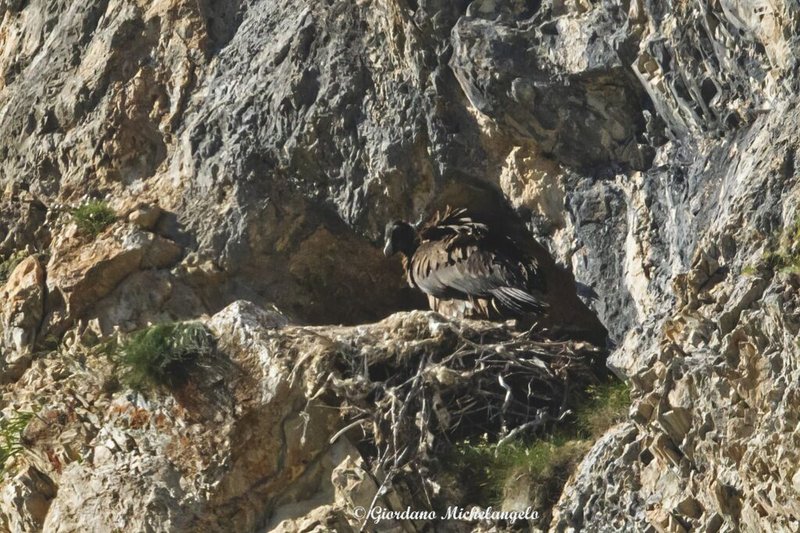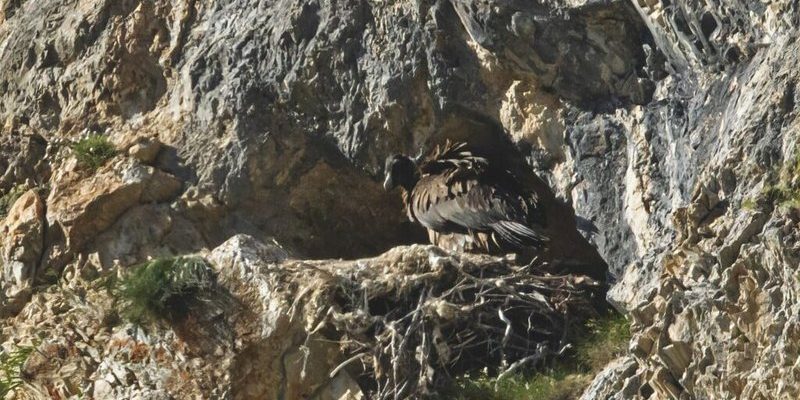
Imagine a couple building their home on a high cliff ledge, surrounded by nothing but sky and rugged rocks. That’s where you’ll find these birds nurturing their young. Their nesting habits are not just about finding a spot to lay eggs; they’re about ensuring safety and survival, both for themselves and their future generations. Let’s dive deep into the fascinating world of bearded vultures and explore their nesting habits and lifecycle.
Where Do Bearded Vultures Nest?
Bearded vultures have a knack for choosing the most dramatic locations for their nests. They typically build their homes on rocky cliffs, often at dizzying heights. Why do they do this? Well, it’s all about keeping their eggs safe from predators. These elevated spots offer a panoramic view of the surrounding area, allowing the parent birds to watch for any lurking dangers while providing a secure environment for their chicks.
The nests themselves are quite the architectural feats. Made from sticks, stones, and other natural materials, these nests can be several feet deep and wide. Some nests are even used over multiple breeding seasons, becoming larger and more elaborate with each year. It’s like adding layers to a cake, each season adding its unique touch, making it not just a home but a testament to the couple’s history together.
Choosing the Perfect Spot
The location selection isn’t merely a whim; it’s a strategic decision based on several factors. The bearded vulture tends to prefer areas with minimal human disturbance, which means they often avoid popular hiking trails or busy tourist spots. They also look for cliffs that face the sun, allowing their young to warm up while still being safe from the chilly winds that can sweep through their mountainous homes.
Like any savvy real estate investor, they seek out places with abundant food sources nearby, usually consisting of carcasses of large animals. This is vital for both the adult vultures and their growing chicks, who need ample nutrition to thrive.
The Breeding Cycle of Bearded Vultures
Once a bearded vulture has found that perfect nesting spot, it’s time to focus on breeding. The breeding cycle typically kicks off in late winter to early spring. The male and female establish a strong bond during this time, engaging in displays of affection that include aerial acrobatics and synchronized flying. It’s quite a sight to see!
After a courtship that can last weeks, the female lays one to two eggs. Here’s the thing: bearded vultures are known to invest a lot of energy into raising just one chick most of the time, as the survival rate for two chicks is low in the wild due to limited food resources. This means they’re making a serious commitment to ensuring their offspring has the best chance of survival.
Incubation and Hatching
Once the eggs are laid, incubation begins. Both parents share the responsibility of keeping the eggs warm, taking turns for about 50 to 60 days until they hatch. During this period, both birds stay close to the nest, protecting it from any potential threats. Talk about teamwork!
When the eggs finally hatch, it’s a moment of joy, but it’s also the start of a demanding journey. The hatchlings are covered in downy feathers and are completely dependent on their parents for food and warmth. This is where the real parenting begins—bringing food back to the nest, often in the form of bones from animal carcasses.
Feeding and Growing Up
Raising a chick is no small feat. In the early days, both parents feed the chick by regurgitating food. Yes, it might sound a little gross, but it’s necessary for the chick to get the right nutrients. As the chick matures, their diet shifts to more substantial meals, primarily consisting of bones. It’s fascinating to note that bearded vultures have a unique relationship with bones—they not only rely on them for nourishment but also develop a skill for breaking them open.
As the chick grows, it’s not just about eating. The parents also teach them essential survival skills, such as how to fly and where to find food. It’s like sending your child off to college, but instead of dorm life, it’s all about soaring through the skies and mastering the art of scavenging.
Flight and Independence
Usually, by 5 to 6 months, the young vultures are ready to leave the nest. This moment can be both exciting and nerve-wracking. The fledgling will take its first flight, soaring over the cliffs where it was raised, learning to navigate its surroundings. While the parents may initially continue to provide food, they start encouraging independence.
This transitional phase is critical. It’s a time when the young vultures perfect their flying skills and begin to explore their territory, often sticking close to home but slowly expanding their range. During this time, they also learn vital social skills by interacting with other young vultures in the vicinity.
Challenges Faced by Bearded Vultures
Despite their majestic nature, bearded vultures face several challenges throughout their lifecycle. Habitat loss is one of the most significant threats. As humans encroach on their mountainous homes, these birds find it increasingly difficult to find safe nesting sites. Pollution and poaching also pose severe risks, impacting their food sources and overall survival.
Additionally, bearded vultures have a low reproductive rate, with many only breeding successfully every other year. This means their population growth is slow, which can be problematic when faced with environmental pressures. Conservation efforts are in place, but it’s a long road ahead.
Conservation Efforts
Fortunately, there are dedicated organizations working hard to protect these incredible birds. Conservation efforts include habitat protection, public awareness campaigns, and breeding programs to help boost populations in the wild. These initiatives aim to restore natural habitats and ensure that bearded vultures can thrive for generations to come.
Educating local communities about the importance of preserving the bearded vulture’s habitat is also crucial. When people understand the role these birds play in the ecosystem—like cleaning up carrion—they’re more likely to support conservation initiatives.
The lifecycle of the bearded vulture is a beautiful narrative of resilience and adaptation in one of the world’s most challenging environments. From their breathtaking nesting habits high in the mountains to the nurturing of their young, these birds represent the wonders of nature and the intricate balance of life. As we learn more about them, we also become better equipped to ensure their survival, allowing future generations the chance to marvel at these magnificent creatures.
So next time you think of vultures, remember the bearded vulture—its lofty nesting habits, complex lifecycle, and the challenges it faces. These birds not only enrich our natural world but also remind us of the importance of wildlife conservation, urging us to look beyond the surface and appreciate the beauty in every feathered friend.

